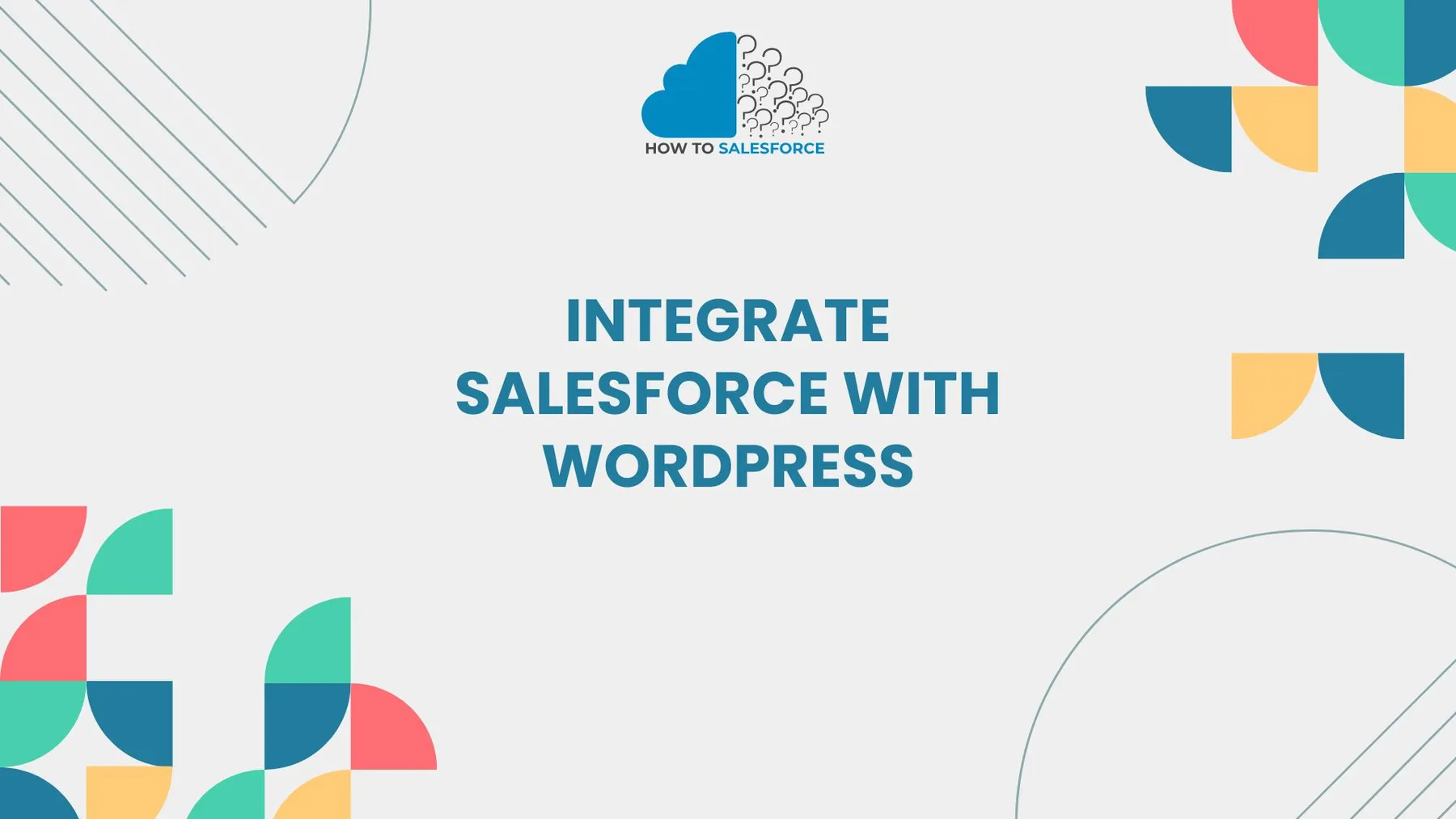Introduction
Businesses can gain a lot from integrate Salesforce with WordPress. It improves customer experiences, data management, and process efficiency. The integration process will be explained in this article along with its advantages, difficulties, and best practices.
Why stop now? See what else I’ve written on: Split Opportunity Salesforce
Understanding the Integration of Salesforce and WordPress
Firstly, data synchronization between WordPress and Salesforce is made possible by their integration. You can improve user experience, automate marketing tasks, and improve lead management by connecting these systems.
Benefits of Integration
- Enhanced Data Management: Gather all of your data in one location. This guarantees you have current information.
- Enhanced Customer Engagement: Give your website visitors individualized experiences. Customer loyalty and satisfaction rise as a result.
- Streamlined Processes: To save time, automate repetitive tasks. Instead of doing data entry by hand, concentrate on expanding your company.
Preparing for the Integration: Integrate Salesforce with WordPress
Moreover, there are a few things to do before the integration process begins. For a seamless integration experience, adhere to these steps.
Assess Your Needs
First, determine what your company needs. Know what you hope to accomplish with the integration. This assists you in selecting appropriate tools and techniques.
Choose the Right Plugin: Integrate Salesforce with WordPress
Choose an appropriate plugin for integration next. There are numerous choices available, including:
- WP Salesforce: This plugin allows WordPress and Salesforce to be directly connected.
- Gravity Forms: For sophisticated form creation with Salesforce integration, use this plugin.
Create a Salesforce Account
Make a Salesforce account if you don’t already have one. Register for the Salesforce version that best suits your company’s requirements.
Step-by-Step Guide to Integrate Salesforce with WordPress
Moreover, let’s get started with the integration process now that you’re ready. To successfully integrate Salesforce with WordPress, adhere to these steps.
Step 1: Install and Activate the Plugin
Navigate to the dashboard of WordPress.
– In the Plugins menu, select Add New.
– Look for the Salesforce integration plugin of your choice.
– Install and Activate the plugin, respectively.
Step 2: Connect Your Salesforce Account
Connect your Salesforce account once the plugin has been activated.
– Navigate through the plugin’s settings.
– Input your Salesforce login information.
– To create a connection, adhere to any further directions.
Step 3: Configure the Settings
Next, adjust the plugin’s settings to suit your requirements.
– Decide which data you wish to have synchronized between Salesforce and WordPress.
– Create contact or lead generation forms to collect user data.
– Modify fields to fit your Salesforce configuration.
Step 4: Test the Integration
Make sure the integration is fully tested before going live.
– Complete your forms and verify that the information enters Salesforce.
– Make sure the information is displayed accurately in your Salesforce account.
– If required, make modifications to guarantee seamless operation.
Common Challenges in Integration: Integrate Salesforce with WordPress
Furthermore, you might run into problems when integrating WordPress and Salesforce. Listed below are some typical problems and fixes.
Data Mapping Issues
Data mapping between WordPress and Salesforce can occasionally go wrong.
– Verify that the names of the fields on both platforms correspond.
– Make precise field connections by using the mapping feature of the plugin.
API Limits
You should take into account Salesforce’s API limitations.
– Keep a close eye on your API usage to prevent exceeding limits.
– Reduce the number of API calls by optimizing the frequency of your data sync.
Plugin Conflicts
Plugin conflicts can occur from time to time.
– To find conflicts, temporarily deactivate other plugins.
– Verify for compatibility problems and updates.
Best Practices for Integration
Additionally, use these best practices to guarantee a successful Salesforce and WordPress integration.
Keep Everything Updated: Integrate Salesforce with WordPress
Always keep Salesforce and WordPress plugins up to date.
– Regularly check for updates to improve performance and security.
– Whenever required, update the integration plugin.
Monitor Data Quality
Check the quality of your data regularly.
– Eliminate redundant and out-of-date data.
– Utilize Salesforce tools to preserve the integrity of your data.
Train Your Team: Integrate Salesforce with WordPress
Ascertain that your staff has received training on how to use the integrated systems.
– Conduct training sessions for WordPress and Salesforce.
– To assist your team in navigating the integration, create documentation.
Conclusion
To sum up, you can significantly improve your company’s operations by integrating Salesforce with WordPress. This integration increases customer engagement, automates tasks, and streamlines data management. This guide will walk you through the process of successfully integrating Salesforce with WordPress. Your company will be better equipped to prosper in a cutthroat market thanks to this. To reach your full potential, embrace integration’s power.


